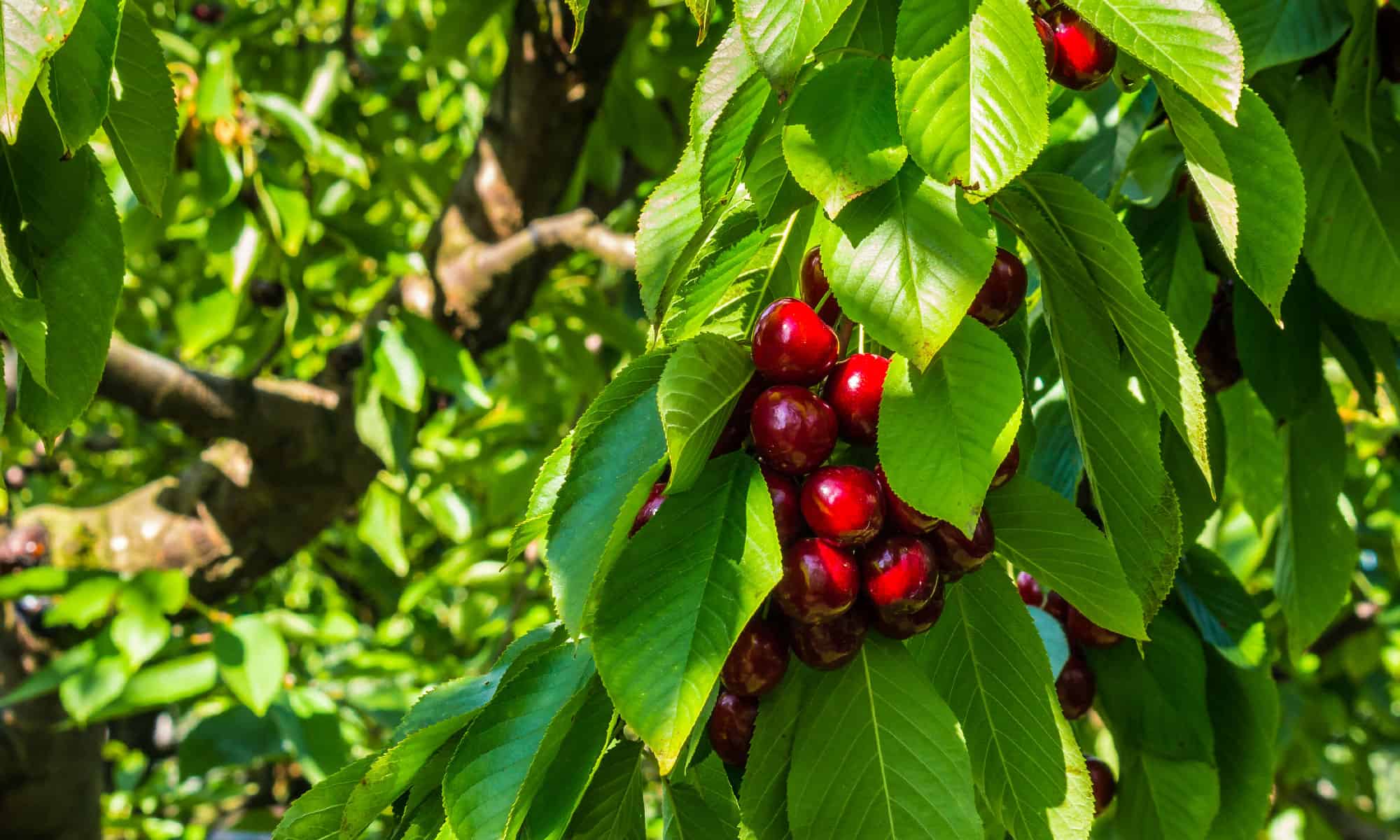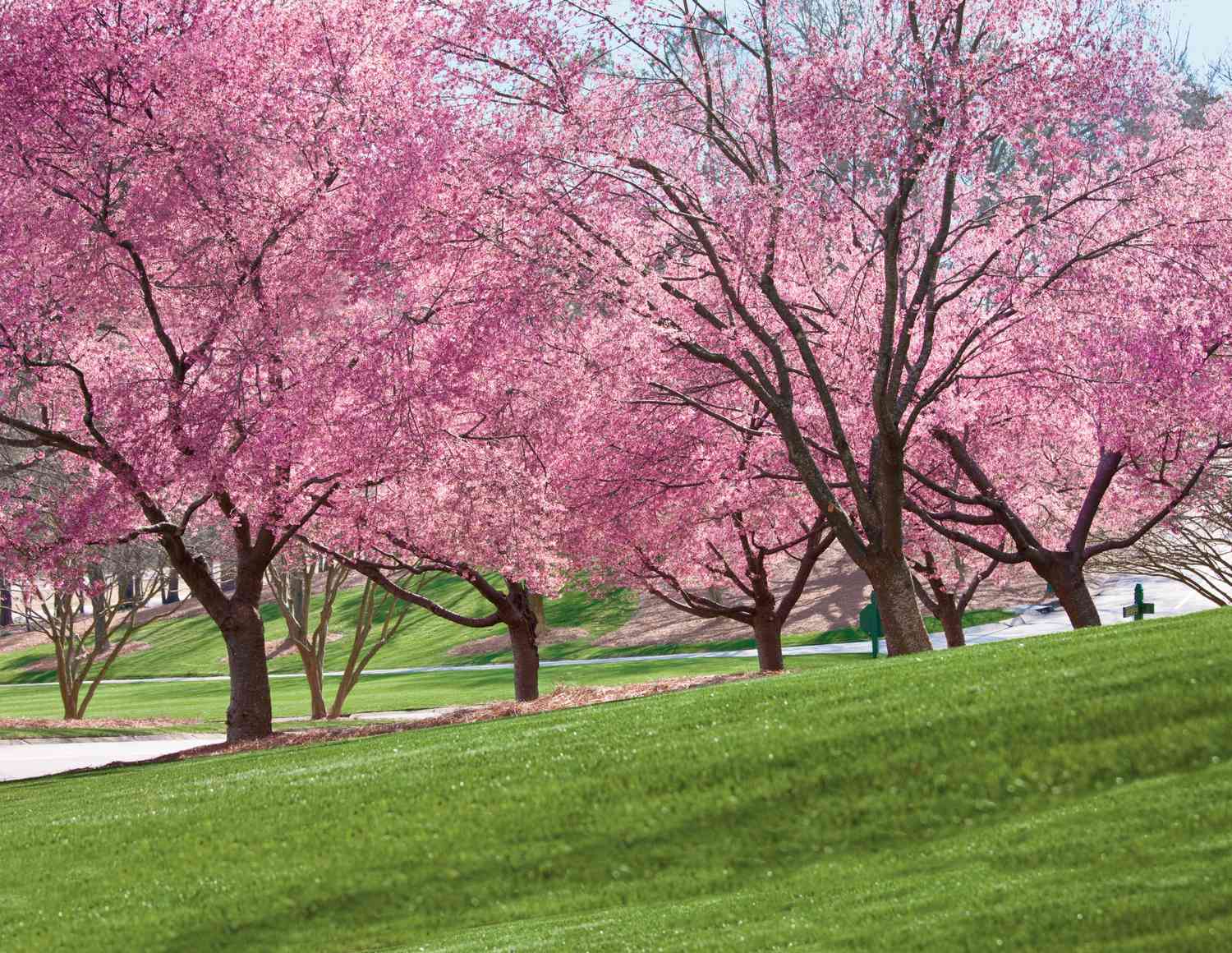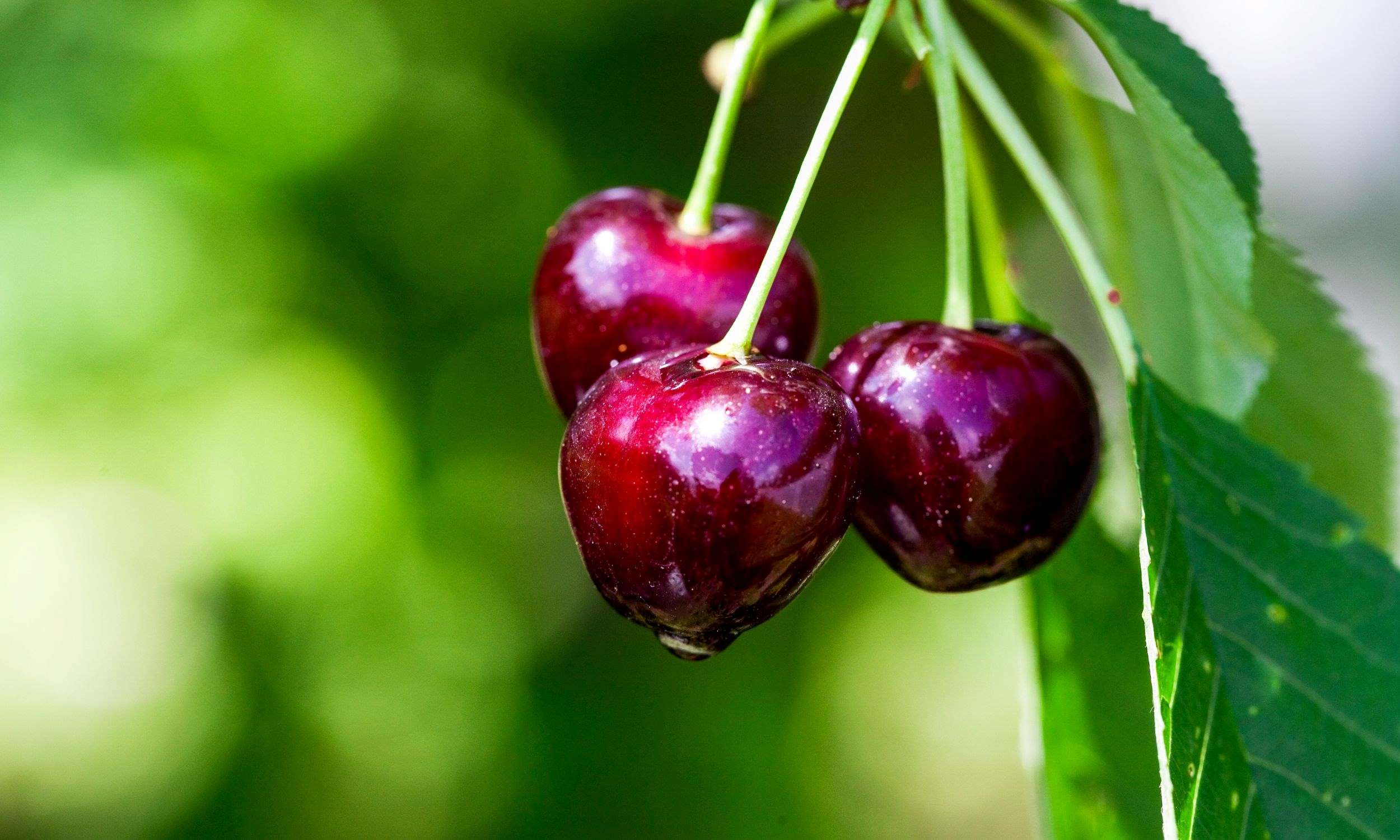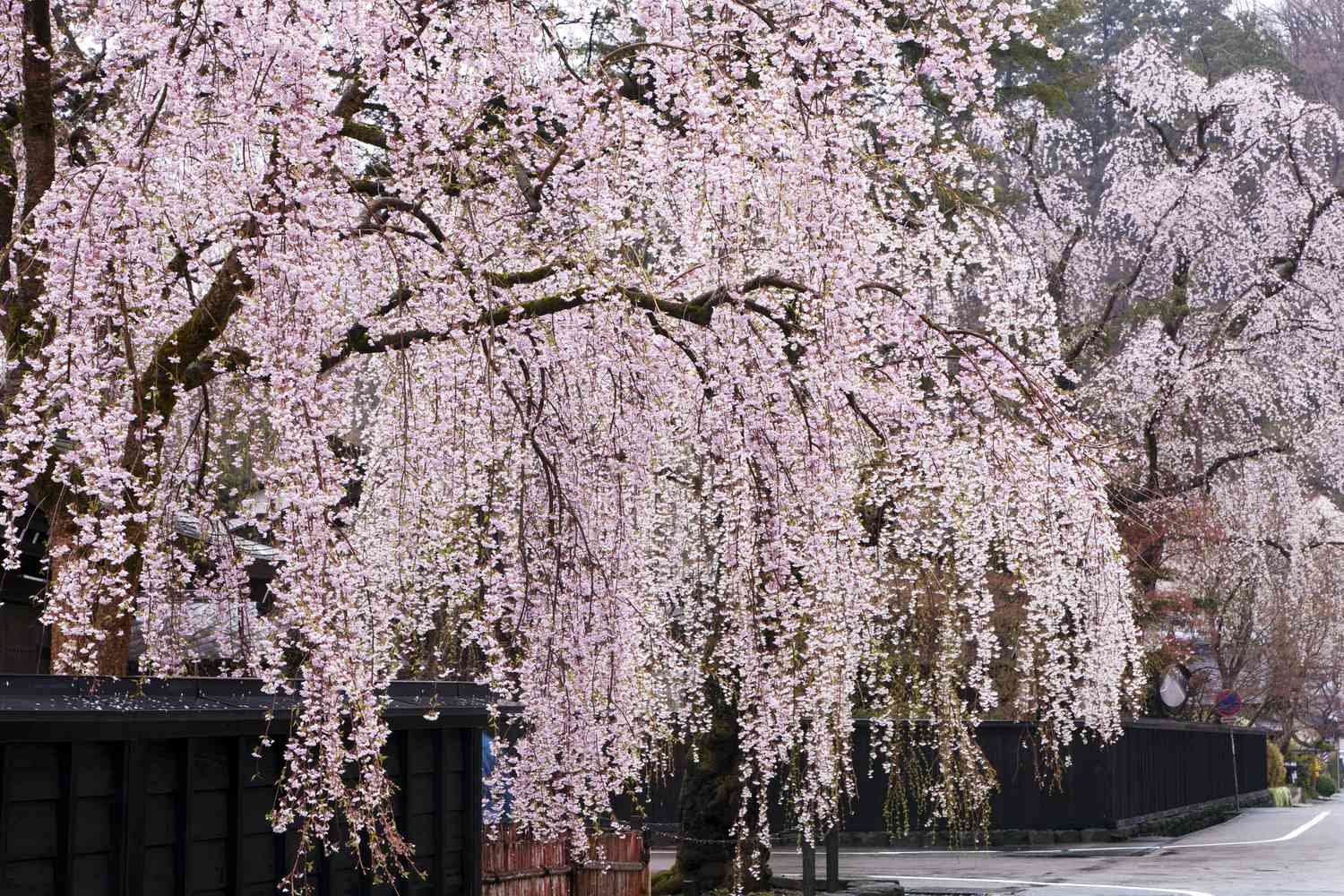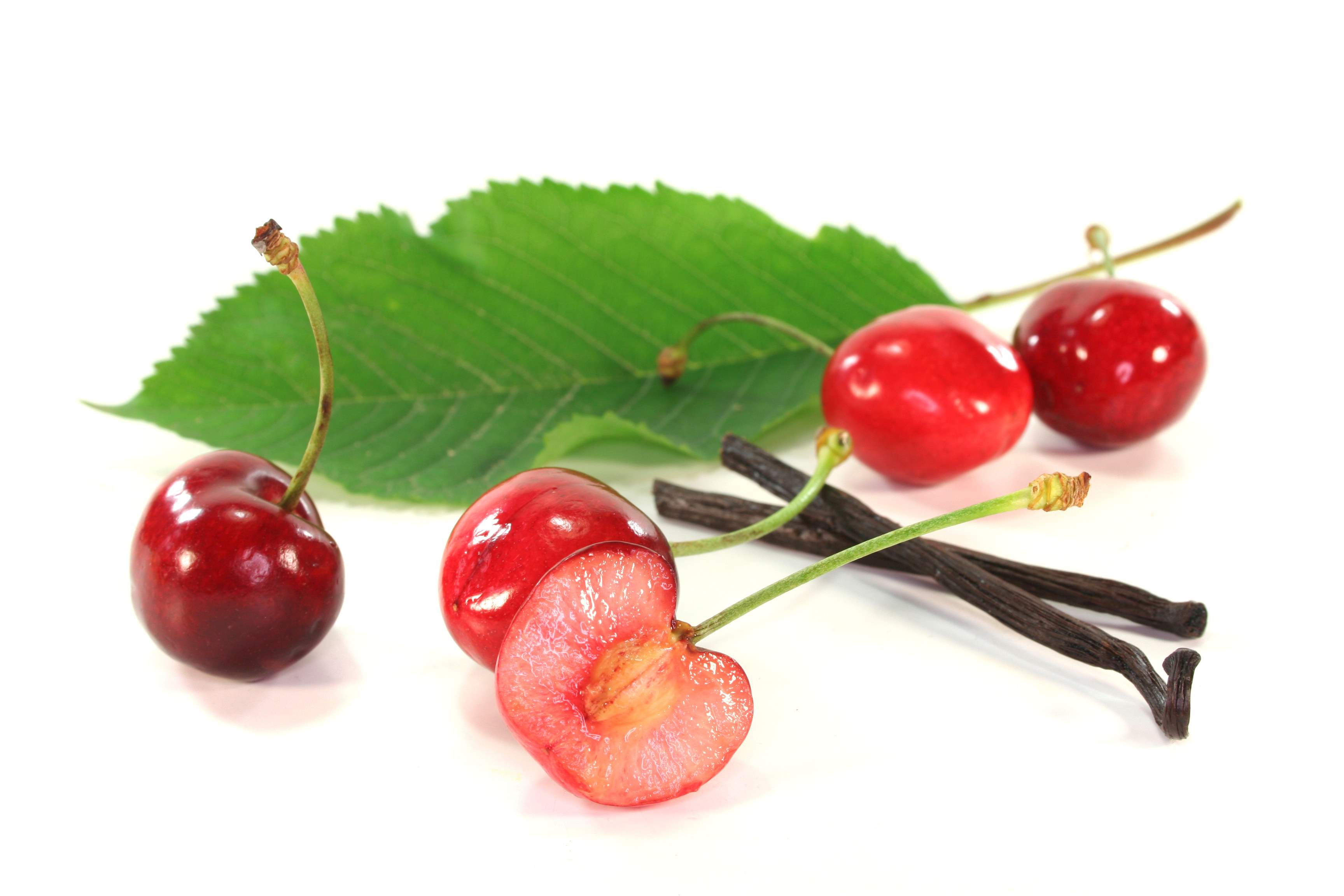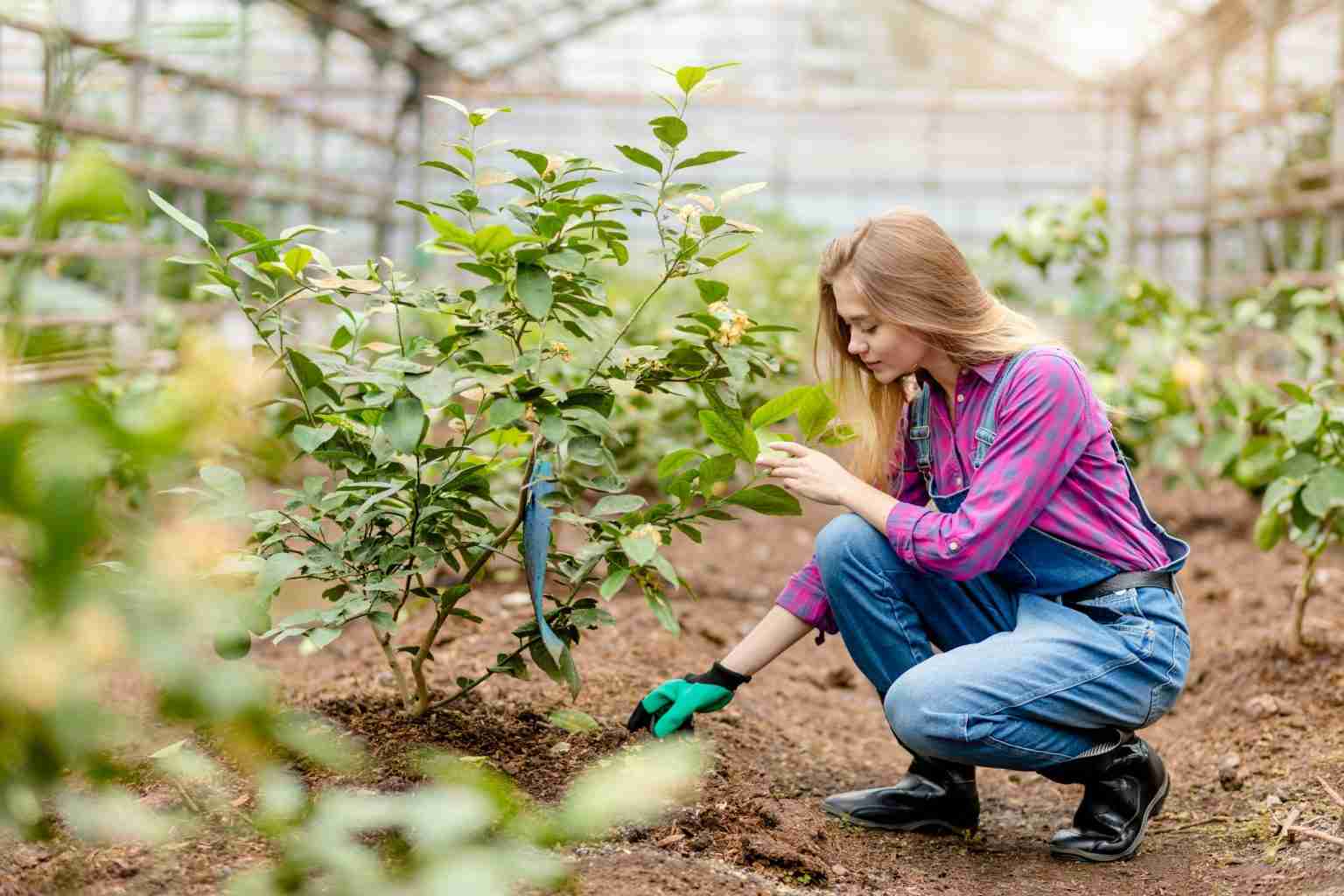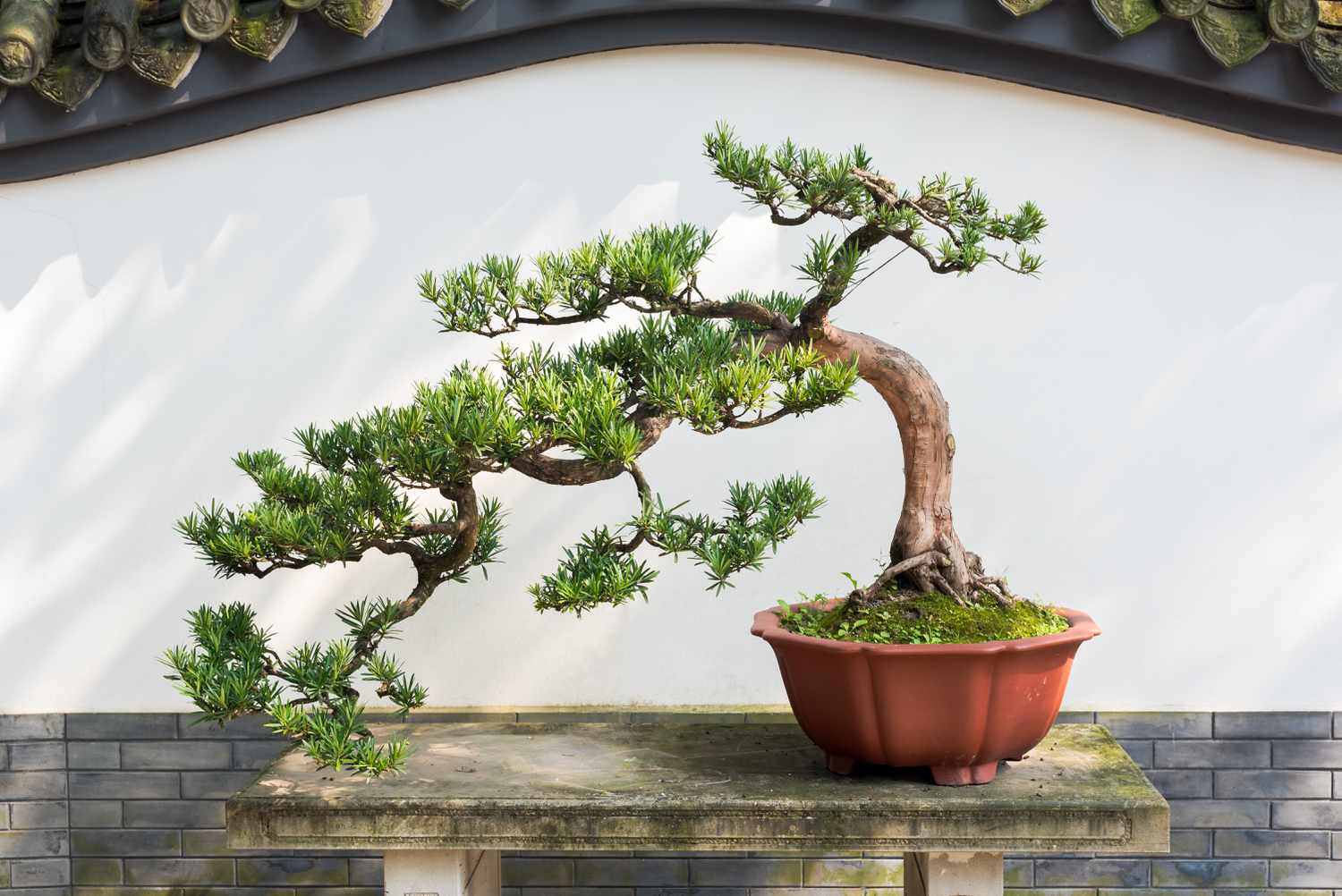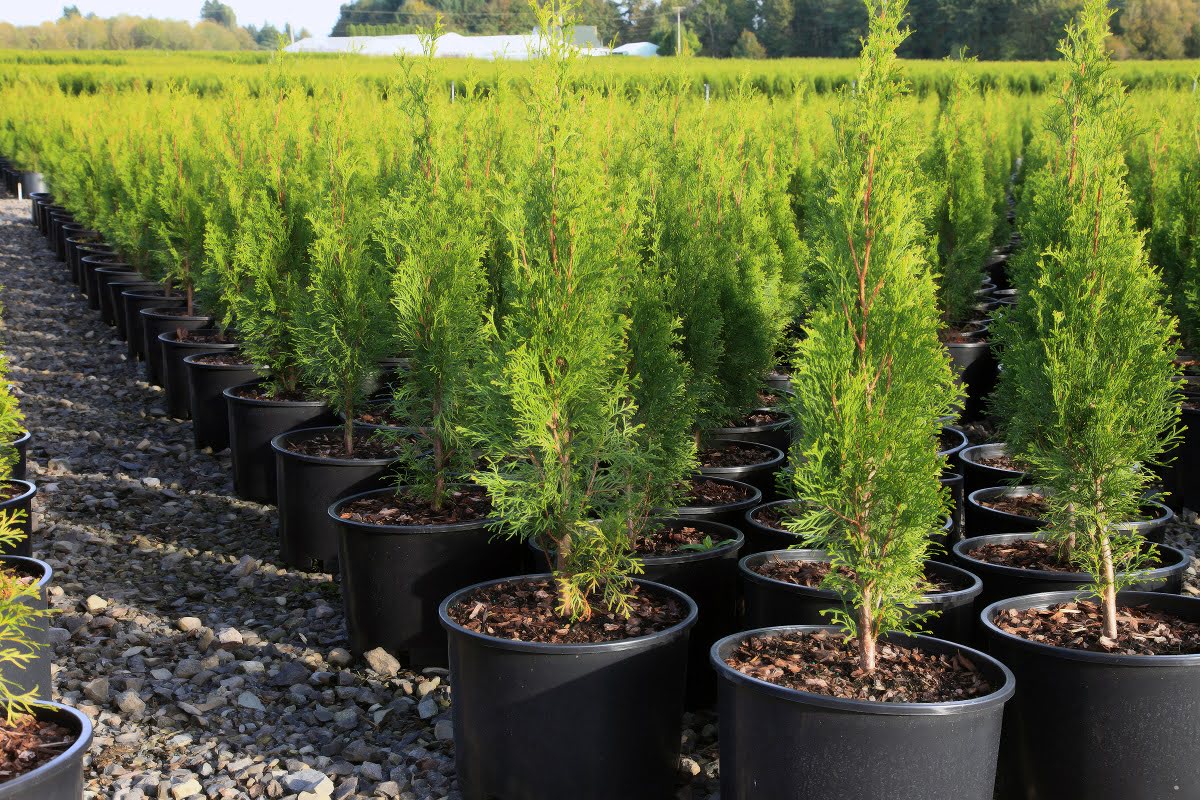Home>Garden Design>Landscape Design>Where To Plant Cherry Trees
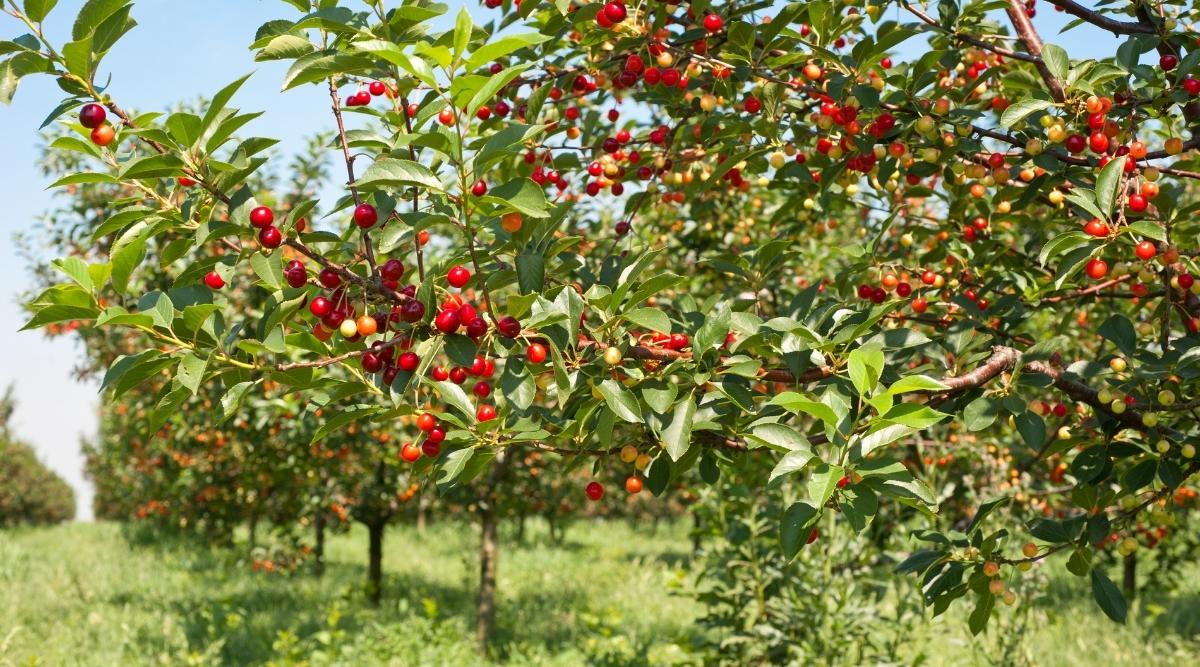

Landscape Design
Where To Plant Cherry Trees
Modified: January 22, 2024
Looking for expert landscape design advice on where to plant cherry trees? Discover the best locations and tips to create a beautiful cherry tree oasis.
(Many of the links in this article redirect to a specific reviewed product. Your purchase of these products through affiliate links helps to generate commission for Chicagolandgardening.com, at no extra cost. Learn more)
Table of Contents
Introduction
Welcome to the world of landscape design! Whether you have a small backyard or a sprawling garden, adding cherry trees to your outdoor space can create a stunning focal point and provide a touch of natural beauty. Cherry trees are not only known for their breathtaking blossoms but also for their delicious fruit. However, before you rush to plant a cherry tree, there are several factors you need to consider to ensure its successful growth and longevity.
Planting a cherry tree is a long-term commitment, so it’s important to do your research and plan carefully. This article will guide you through the process of choosing the right location, preparing the soil, selecting the appropriate cherry tree variety, and providing the necessary care and maintenance for your trees.
Before we delve into the specifics, it’s essential to understand that different varieties of cherry trees have different cultivation requirements. Factors such as climate, sunlight, soil type, and spacing must be taken into account to create an environment in which your cherry trees can thrive. By considering these factors and following the guidelines provided in this article, you will be well on your way to creating a stunning cherry tree display in your landscape.
So, whether you’re a seasoned gardener or just starting out, get ready to embark on a journey to transform your outdoor space with beautiful cherry trees. Let’s dive in and explore the factors you should consider before planting these magnificent trees.
Factors to Consider Before Planting
Planting cherry trees requires careful consideration of several factors to ensure their successful establishment and growth. By taking the time to evaluate these factors, you can create an optimal environment for your cherry trees to thrive. Let’s explore the key factors you should consider:
- Climate: Cherry trees have different temperature requirements depending on the variety. Some prefer cool climates, while others thrive in warmer regions. Check the hardiness zone of your area to determine which varieties are suitable for your climate.
- Soil Type: Cherry trees prefer well-drained soil that is rich in organic matter. Conduct a soil test to assess the soil pH and nutrient levels. Adjust the soil composition if necessary by adding amendments such as compost or organic matter.
- Water Availability: Cherry trees require regular watering, especially during the establishment phase. Consider the availability of a water source and ensure proper irrigation to prevent water stress.
- Space: Consider the space available in your landscape for planting cherry trees. Cherry trees can range in size, so make sure you have enough room for the tree to grow to its mature size without crowding other plants or structures.
- Pollination: Some cherry tree varieties require cross-pollination in order to produce fruit. Be sure to plant compatible varieties within close proximity to ensure proper pollination.
- Neighboring Plants: Consider the plants surrounding your cherry trees. Avoid planting them near trees or shrubs that have aggressive roots or dense foliage, as they can compete for resources and hinder the growth of your cherry trees.
- Pest and Disease Resistance: Research cherry tree varieties that are known for their resistance to common pests and diseases in your area. Choosing resistant varieties can reduce the risk of potential issues and simplify maintenance.
- Maintenance: Consider the level of maintenance you are willing to commit to. Some cherry tree varieties require regular pruning, while others are more low-maintenance. Determine the level of care you can provide to ensure the long-term health of your cherry trees.
By taking these factors into account, you can make informed decisions and set the stage for successful cherry tree cultivation. Now that we have discussed the factors to consider, let’s move on to choosing the right location for your cherry trees.
Choosing the Right Location
Choosing the right location for your cherry trees is crucial for their overall health and productivity. Here are some key considerations when selecting a location:
- Sunlight Exposure: Cherry trees thrive in full sun, ideally receiving at least 6-8 hours of direct sunlight each day. Choose a location with ample sunlight to promote proper growth and fruit production.
- Protection from Wind: While cherry trees enjoy sunlight, they are also sensitive to winds. Plant them in a location that offers some protection from strong winds, such as near a fence or building.
- Air Circulation: Good air circulation is essential for preventing fungal diseases on cherry trees. Avoid planting them in areas with poor air movement or where cold air can stagnate, such as low-lying spots.
- Proximity to Other Trees: Avoid planting cherry trees near large, established trees that can shade or compete with the cherry tree’s growth. Give them ample space to grow without obstructions.
- Accessibility: Consider the accessibility of the location for maintenance tasks such as watering, pruning, and harvesting. Choose a location that is easy to reach and work around.
- Aesthetics: Think about how the cherry trees will complement the overall aesthetics of your landscape design. Consider the size, shape, and color of the trees and how they will fit into the existing theme.
Keep in mind that the specific requirements may vary depending on the cherry tree variety you choose. It’s essential to research the specific needs of the variety you are planting to ensure you are providing the optimal conditions.
Once you have considered these factors and selected a suitable location for your cherry trees, it’s time to prepare the soil to provide the ideal foundation for their growth and development. The next section will guide you through the soil requirements for cherry trees.
Soil Requirements
The soil quality plays a crucial role in the overall health and growth of cherry trees. Here are the key soil requirements to consider when planting cherry trees:
- Well-Drained Soil: Cherry trees prefer soil that drains well and does not retain excessive moisture. Poorly drained soil can lead to root rot and other diseases. Avoid planting in areas prone to waterlogging or heavy clay soils. If your soil drains poorly, consider amending it with organic matter, such as compost or well-rotted manure, to improve drainage.
- Soil pH: Cherry trees thrive in slightly acidic to neutral soil, with an optimum pH range of 6.0 to 7.0. Test your soil’s pH level and adjust if needed using amendments like sulfur or lime.
- Nutrient Content: Ensure your soil is rich in essential nutrients. Conduct a soil test to determine the nutrient levels, particularly nitrogen, phosphorus, and potassium. If deficiencies are detected, add appropriate fertilizers to provide the necessary nutrients for healthy tree growth.
- Organic Matter: Incorporating organic matter into the soil improves its structure, drainage, and nutrient-holding capacity. Prior to planting, mix in well-rotted compost or aged manure to enrich the soil and promote healthy root development.
Before planting, it’s essential to prepare the soil. Start by removing any weeds, rocks, or debris from the planting area. Dig a hole that is wide and deep enough to accommodate the cherry tree’s root system, ensuring there is sufficient space for the roots to spread out. Loosen the soil at the base of the hole to promote root penetration and establishment.
Once the cherry tree is planted, apply a layer of mulch around the base to help retain moisture, regulate soil temperature, and inhibit weed growth. Mulching also adds organic matter to the soil as it breaks down over time.
Remember to monitor the soil moisture regularly and water as needed to keep the soil consistently moist but not waterlogged. With proper soil preparation and maintenance, your cherry trees will have a strong foundation for healthy growth and fruit production. The next section will cover the sunlight and shade requirements for cherry trees.
Sunlight and Shade
Sunlight is crucial for the growth and development of cherry trees. Adequate sunlight ensures proper photosynthesis, which directly impacts the tree’s overall health and fruit production. Here are the key considerations regarding sunlight and shade for cherry trees:
- Full Sun: Cherry trees thrive in full sun, which typically means they should receive at least 6-8 hours of direct sunlight each day. Select a planting location that is unobstructed by buildings, trees, or other structures that may cast shade on the tree.
- Partial Shade: While cherry trees prefer full sun, they can tolerate some shade, especially in hot climates. Partial shade can help protect the tree from scorching sun or sunburn during the hottest part of the day. However, be cautious of excessive shade, as it can diminish fruit production and overall tree vigor.
- Shade from Trees: If planting near existing trees, consider the shade they may cast on the cherry tree. Large trees with dense foliage can significantly reduce the amount of sunlight the cherry tree receives and may negatively affect its growth and productivity.
- Seasonal Sunlight: Keep in mind the changing angles of the sun throughout the year. In some regions, the direction and intensity of sunlight can vary, so it’s essential to assess how the sun will interact with the planting site during different seasons.
Proper sunlight exposure is crucial for the cherry tree’s ability to produce an abundant crop of delicious fruit. While cherry trees can tolerate some shade, aim to provide them with as much direct sunlight as possible, especially during the growing season.
In the next section, we will discuss the climatic considerations you should keep in mind when planting cherry trees.
Climate Considerations
Cherry trees have specific climate requirements for optimal growth and fruit production. Understanding your region’s climate is essential when selecting cherry tree varieties and providing appropriate care. Here are some climate considerations to keep in mind:
- Hardiness Zone: Cherry tree varieties have different temperature tolerances. Check your USDA hardiness zone to determine which varieties are suitable for your specific climate. Selecting varieties that are compatible with your zone will increase the chances of successful growth.
- Chill Hours: Many cherry tree varieties require a certain number of chill hours during winter to break dormancy and initiate healthy growth in spring. Check the chill hour requirements of the specific variety you are planting and ensure your region meets those requirements.
- Frost Risk: Cherry trees are vulnerable to late frosts, especially during bloom time. Consider the average frost dates in your area, and if there is a risk of late frosts, choose cherry tree varieties that have a later bloom time to avoid potential damage to flowers and fruit.
- Temperature Extremes: Cherry trees have limits to their tolerance for extreme cold or heat. In regions with extremely cold winters or hot summers, selecting cherry tree varieties that are known to thrive in those conditions is crucial for their survival and productivity.
- Rainfall and Humidity: Cherry trees prefer regions with moderate rainfall and humidity. Adequate moisture is essential for healthy growth and fruit development. If you live in an area with low rainfall, supplemental irrigation may be necessary.
Understanding your climate and selecting cherry tree varieties that are well-suited to your region will greatly increase your chances of success. Consult with local gardening experts or nurseries to get recommendations on cherry tree varieties that thrive in your specific climate.
Now that we have covered the climate considerations for cherry trees, let’s move on to the importance of spacing and placement in your landscape design.
Spacing and Placement
Spacing and placement are crucial factors to consider when planting cherry trees. Giving them adequate space and considering their placement in your landscape design will ensure healthy growth and optimal fruit production. Here are some key points to keep in mind:
- Minimum Spacing: Cherry trees require sufficient space for their root systems to establish and expand. Depending on the variety, the minimum spacing between cherry trees should be around 15 to 20 feet. This allows for proper air circulation and minimizes competition for nutrients and sunlight.
- Consider Mature Size: When determining the placement of your cherry trees, take into account their expected mature size. Consider both the height and spread of the tree canopy. Avoid planting them too close to structures, as they may outgrow the available space and cause potential issues.
- Planting in Rows: Planting cherry trees in rows can create a visually appealing and organized arrangement. This can also facilitate access for maintenance tasks such as pruning, fertilizing, and harvesting.
- Consider Shade and Shadows: Assess how the cherry tree’s placement and growth will affect the surrounding area. Consider potential shade patterns and how they may impact other plants or areas of your landscape. Also, be mindful of casting unwanted shadows on areas that receive ample sunlight, such as vegetable gardens.
- Windbreaks: When planning the placement of your cherry trees, consider the prevailing winds in your region. Utilize existing structures or plant windbreaks such as shrubs or tall trees on the windward side of the trees to protect them from strong winds.
Strategic spacing and thoughtful placement of your cherry trees in your landscape design will not only contribute to their health and productivity but also enhance the overall aesthetics of your outdoor space. Take the time to plan and visualize how the cherry trees will fit into the existing design and create a harmonious environment.
Now that we have covered the spacing and placement considerations, let’s move on to the planting process to ensure your cherry trees get off to a successful start.
Planting Process
The planting process is a crucial step in establishing healthy cherry trees. Following proper planting techniques will provide a strong foundation for growth and ensure long-term success. Here are the key steps to follow:
- Timing: The best time to plant cherry trees is in late winter or early spring, before the trees begin to break dormancy. This allows them to establish their roots before the active growing season.
- Preparation: Start by preparing the planting hole. Dig a hole that is wide and deep enough to accommodate the tree’s root system. Loosen the soil at the base of the hole to promote root penetration.
- Root Pruning: If the cherry tree you’re planting comes in a container, gently loosen any circling roots and trim them to encourage outward growth. This helps prevent root girdling and promotes healthy root development.
- Placement: Place the cherry tree in the center of the hole, making sure the bud union (if present) is above the soil line. The bud union is the swollen area where the tree was grafted onto the rootstock.
- Backfill: Backfill the hole with the excavated soil, tamping it gently to eliminate air pockets. Avoid compacting the soil too firmly, which can hinder root growth.
- Watering: After planting, thoroughly water the cherry tree to settle the soil and provide much-needed moisture. Monitor the soil moisture regularly and water as needed, ensuring the root zone remains consistently moist but not waterlogged.
- Staking: If necessary, secure the cherry tree to a stake to provide support and stability. Use tree ties or soft material to avoid damaging the trunk. Remove stakes after the first year unless the tree requires additional support.
- Mulching: Apply a layer of organic mulch around the base of the tree, leaving a few inches of space around the trunk. This helps retain soil moisture, regulate soil temperature, and inhibit weed growth. Avoid piling mulch against the trunk, as it can cause rot.
Remember to carefully follow the planting instructions provided with your cherry tree, as specific variations in planting techniques may apply depending on the tree’s form (bare root, container, or balled and burlapped).
By following these steps, you will give your cherry trees the best chance for a healthy start. Now let’s move on to the next important aspect of cherry tree care: watering and irrigation.
Watering and Irrigation
Proper watering is essential for the health and vitality of cherry trees, especially during their initial establishment period. Here are key guidelines to follow for effective watering and irrigation:
- Establishment Period: During the first few years after planting, cherry trees require regular watering to help their root systems establish. Provide sufficient water to keep the soil consistently moist, but avoid overwatering, as it can lead to root rot.
- Deep Watering: When watering, aim for deep penetration into the soil rather than shallow and frequent watering. Deep watering encourages the roots to grow deeply, promoting a stronger and more drought-tolerant tree.
- Frequency: The frequency of watering will depend on various factors such as climate, rainfall, and soil type. Generally, cherry trees need watering once or twice a week during dry periods. Adjust the frequency based on the moisture levels in the soil.
- Irrigation Methods: There are different methods of irrigation, including hand watering, soaker hoses, drip irrigation, or sprinklers. Choose a method that ensures even and thorough water distribution without causing excessive wetting of foliage, which can lead to disease.
- Avoid Water Stress: Avoid periods of prolonged water stress or drought, as it can impact the tree’s health and fruit production. Signs of water stress include leaf wilting or drooping. Adjust your watering schedule accordingly to prevent water stress.
- Consider Rainfall: Take into account natural rainfall when determining the watering needs of your cherry trees. Adjust the irrigation accordingly, reducing or skipping supplemental watering if there has been sufficient rainfall.
- Mulching: Maintain a layer of organic mulch around the base of the tree to help retain soil moisture. Mulch also acts as an insulator, reducing evaporation and regulating soil temperature. Replenish the mulch layer as needed.
Regular monitoring of soil moisture is crucial to ensure the cherry trees receive adequate water. Check the soil moisture level by inserting your finger or a moisture meter into the soil around the root zone. Adjust your watering schedule based on the moisture level.
By providing consistent and appropriate watering, you will help your cherry trees establish strong root systems and thrive. The next section will cover the importance of mulching and fertilization for cherry trees.
Mulching and Fertilization
Mulching and fertilization are important aspects of cherry tree care that contribute to their overall health and vitality. Here’s what you need to know about mulching and fertilizing your cherry trees:
- Mulching: Applying a layer of organic mulch around the base of cherry trees offers numerous benefits. Mulch helps retain soil moisture by reducing evaporation, prevents weed growth, regulates soil temperature, and adds organic matter as it breaks down. Use materials such as wood chips, straw, or shredded bark, maintaining a layer about 2-4 inches thick. Leave a small space around the trunk to prevent moisture buildup and potential rot.
- Fertilizing: Cherry trees benefit from regular fertilization to ensure they receive the necessary nutrients for healthy growth and fruitful harvests. Conduct a soil test to determine any nutrient deficiencies, particularly nitrogen, phosphorus, and potassium. Select a balanced fertilizer specifically formulated for fruit trees and follow the recommended application rates. Apply fertilizers in early spring before new growth emerges, and avoid excessive fertilization, as it can lead to imbalanced growth or damage to the tree.
- Organic Matter: Incorporating organic matter into the soil helps improve its structure and nutrient content. In addition to mulching, consider adding compost or well-rotted manure around the base of the tree annually. Organic matter enhances soil fertility, microbial activity, and nutrient availability to the cherry tree’s root system.
- Timing: Apply fertilizers and organic matter in early spring or late winter before the cherry tree breaks dormancy. This allows nutrients to be readily available as the tree starts its growth cycle.
- Pruning Debris: When pruning your cherry trees, remove any debris such as dead branches or leaves from the tree and the surrounding area. This helps prevent the buildup of potential diseases or pests and maintains a clean and healthy growing environment.
Regular monitoring of your cherry trees’ growth and health is essential to determine if additional fertilizer applications or amendments are necessary. Over time, observe any signs of nutrient deficiencies, such as yellowing leaves or stunted growth, and address them promptly.
Remember, proper mulching and fertilization contribute to the overall vitality and productivity of your cherry trees. The next section will cover essential pruning and maintenance practices to keep your cherry trees in optimal shape.
Pruning and Maintenance
Pruning and regular maintenance are crucial for promoting healthy growth, maintaining the shape and size of cherry trees, and ensuring optimal fruit production. Here are important guidelines for pruning and general maintenance:
- Pruning Timing: Prune your cherry trees during the dormant season, typically in late winter or early spring before new growth begins. Avoid pruning during the growing season, as it may impact fruiting and increase the risk of disease.
- Deadwood Removal: Start by removing any dead, damaged, or diseased branches. This helps improve air circulation and reduces the risk of pests and diseases. Cut back to healthy wood, making clean cuts just outside the branch collar.
- Thinning: Thin out crowded branches to allow better sunlight penetration and airflow within the canopy. Remove any branches that are crossing or rubbing against each other. Aim for an open and balanced structure, promoting the growth of new, productive wood.
- Size Control: Cherry trees can grow quite large if not properly maintained. Prune branches to control the overall size and shape of the tree, ensuring it remains manageable and does not interfere with nearby structures or other plants.
- Pruning Cuts: When making pruning cuts, use sharp and clean tools to minimize damage to the tree. Avoid leaving stubs or making excessively large cuts, as they may take longer to heal and increase the risk of infections.
- Maintenance Watering: During dry periods, continue to monitor the soil moisture and provide supplemental watering as needed. Ensure the root zone receives sufficient moisture, especially during the hot summer months.
- Pest and Disease Control: Regularly inspect your cherry trees for signs of pests or diseases. Proper sanitation, including maintaining a clean growing area and removing fallen leaves or fruit, can help reduce the risk of infestations.
- Monitoring Fruit Load: Monitor the number of fruits on your cherry trees and thin them if necessary. Overcrowded fruits can lead to smaller, lower-quality fruit and may put strain on the branches. Remove excess fruit to promote bigger, sweeter cherries.
Regular maintenance and diligent pruning practices will enhance the health, appearance, and productivity of your cherry trees. Observing and addressing any issues promptly will help maintain the overall well-being of your trees.
Now that we have covered pruning and maintenance, let’s move on to common problems that can arise with cherry trees and their solutions.
Common Problems and Solutions
While cherry trees are generally hardy and resilient, they can still be susceptible to certain common problems. By being aware of these issues and taking preventative measures, you can ensure the health and vitality of your cherry trees. Here are some common problems and their solutions:
- 1. Pest Infestations: Common pests that can affect cherry trees include aphids, cherry fruit flies, and scale insects. Regularly inspect your trees for signs of pest activity, such as distorted leaves or fruit. Use insecticidal soaps or horticultural oils to control infestations, or introduce beneficial insects that prey on the pests.
- 2. Fungal Diseases: Cherry trees can be susceptible to fungal diseases like cherry leaf spot, brown rot, or powdery mildew. Proper sanitation, such as removing fallen leaves or fruit, can help reduce the spread of fungal spores. Fungicidal treatments may be necessary in severe cases, so consult with a local extension office or arborist for appropriate fungicide recommendations.
- 3. Bird Damage: Birds are known to enjoy the sweet cherries on your trees. Protect your fruit by using physical barriers like bird netting or reflective tape to deter them. Scare devices, such as hanging shiny objects or wind chimes, can also help keep birds away.
- 4. Inadequate Fruit Set: If your cherry trees are not producing an adequate number of fruit, it could be due to poor pollination. Ensure you have compatible varieties planted nearby for cross-pollination, or consider hand-pollinating the flowers using a small brush or cotton swab.
- 5. Nutrient Deficiencies: Nutrient deficiencies can manifest as yellowing leaves, stunted growth, or poor fruit development. Conduct a soil test to determine if any specific nutrients are lacking. Adjust the fertilizer application accordingly or address the deficiency with appropriate organic amendments.
- 6. Winter Damage: In colder regions, cherry trees can experience winter damage, such as bark splitting or damage from freeze-thaw cycles. Wrap the trunks with burlap or use tree wraps to protect them from extreme temperatures. Providing proper winter care, including adequate watering before winter dormancy, can also help prevent damage.
Regular monitoring of your cherry trees and taking proactive measures against these common problems will help maintain the health and vitality of your trees. If you encounter persistent or severe issues, it is advisable to seek professional advice from an arborist or horticulturist.
Now that we have covered common problems and their solutions, you are equipped with the knowledge to address potential issues that may arise with your cherry trees. Let’s wrap up this article with a final thought.
Conclusion
Congratulations! You have now learned about the various factors to consider before planting cherry trees, including climate considerations, soil requirements, sunlight and shade preferences, spacing and placement guidelines, and the importance of proper watering, mulching, fertilization, pruning, and maintenance. By taking these factors into account and following the recommended practices, you can create a thriving environment for your cherry trees and enjoy the beauty of their blossoms and the bounty of their fruit.
Remember, successful cherry tree cultivation requires ongoing care and attention. Regular monitoring, timely pruning, and addressing potential issues promptly will contribute to the long-term health and productivity of your trees. Keep an eye out for common problems such as pest infestations, fungal diseases, bird damage, and nutrient deficiencies, and implement the appropriate solutions to ensure the well-being of your trees.
Whether you’re an experienced gardener or just starting out, the addition of cherry trees to your landscape design can create a stunning and fruitful display. The journey of growing and caring for cherry trees is a rewarding one, as you witness the transformation of delicate blooms into delicious fruit.
As you embark on this exciting gardening adventure, remember to enjoy the process and the beauty that cherry trees bring to your outdoor space. With the knowledge and guidelines provided in this article, you are well-equipped to create a landscape that showcases the splendor of cherry trees for years to come.
